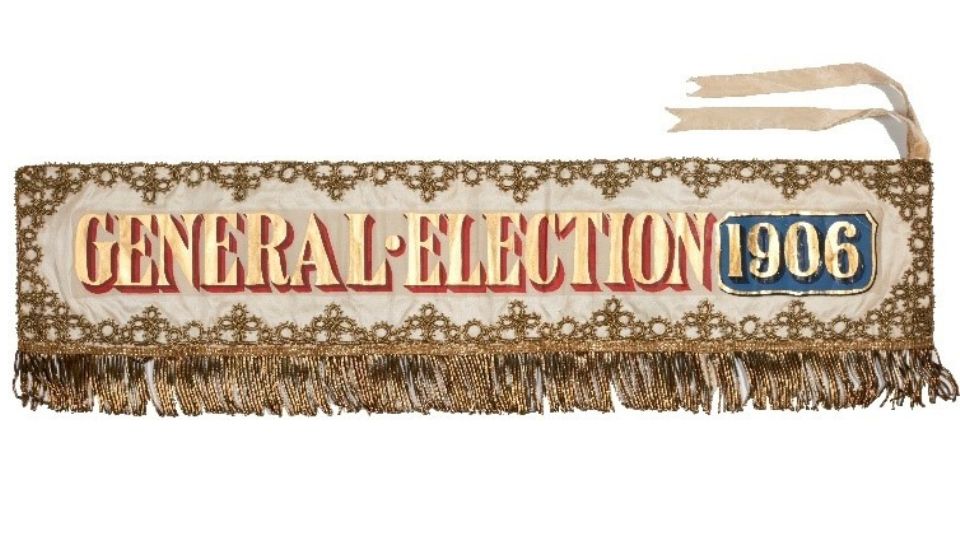
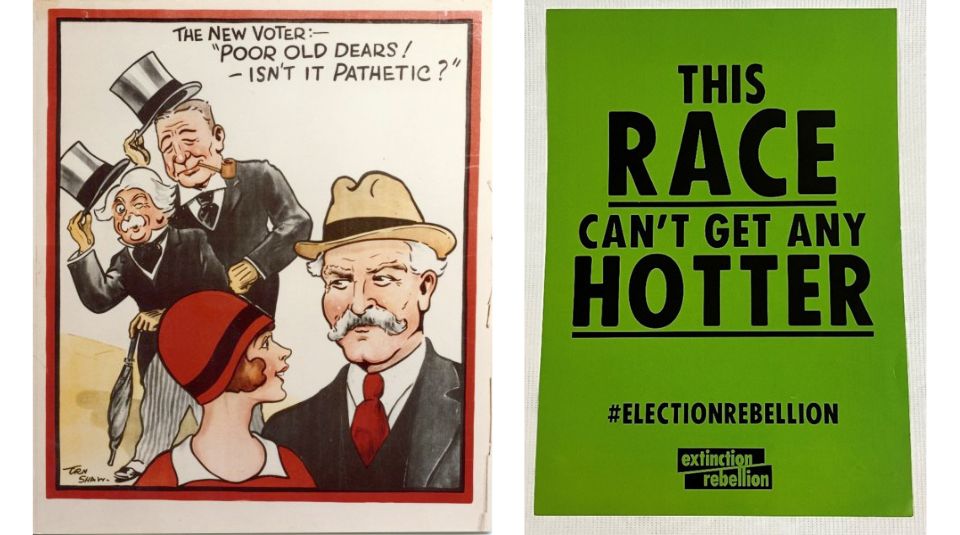
People’s History Museum (PHM) is home to the country’s largest collection of campaign, political and election material and with galleries which vividly tell the story of British democracy. As Britain was preparing to go to the polls, PHM’s Collections Manager Lisa Peatfield highlighted 20 general elections with incredible objects from the collection. The objects were on display at the museum as part of a general election trail until the 30 September 2024.
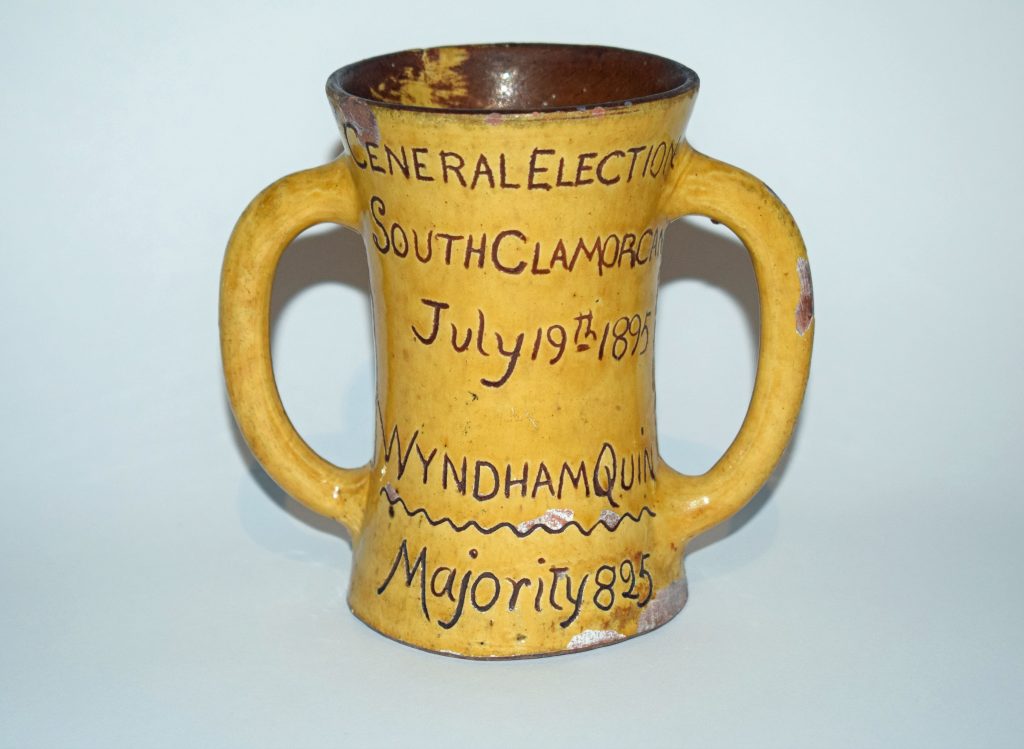
Mug commemorating the 1895 general election victory of the Conservative Party’s Windham Wyndham-Quin, MP in South Glamorgan.
The general election of 1895 was the first to be contested by the Independent Labour Party (ILP), led by Keir Hardie, one of the forerunners of the modern Labour Party. The ILP failed to win any seats. The election was won by the Conservative Party with 411 seats out of 670.
Did you know? The 1895 election was held over several days between 13 July and 7 August. It was not until 1918 that general elections had to be held on a single day (with the exception of Orkney and Shetland which did not move to single day elections until 1929).

Silk banner made by Tutill & Co.
The Liberal Party won a landslide general election in 1906 taking 397 seats in parliament. The Conservative Party had its worst ever result winning only 156 seats.
Did you know? The Labour Representation Committee led by Keir Hardie won six seats in the 1906 general election, bringing the number of Labour MPs up to 29.
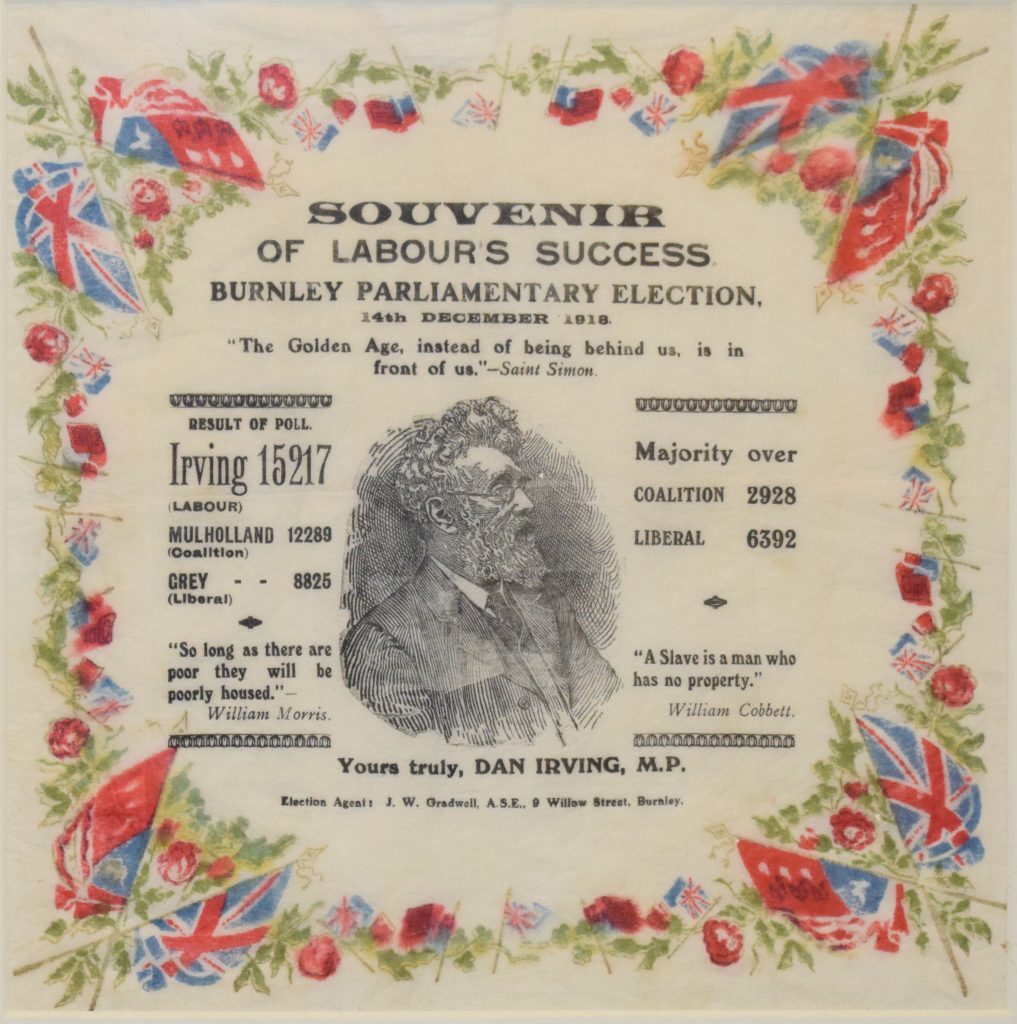
Paper napkin celebrating the election of Dan Irving as Burnley’s MP in 1918.
This was the first general election after the end of the First World War (1914-1918). It led to the wartime Coalition government (mostly Liberals and Conservatives) continuing to govern, having gained a huge majority of 614 out 707 seats in parliament.
Did you know? This was the first parliamentary election in which women could stand as candidates. It led to the first female MP, Sinn Fein’s Constance Markievicz, being elected. In line with her party’s policy she did not take her seat in parliament.
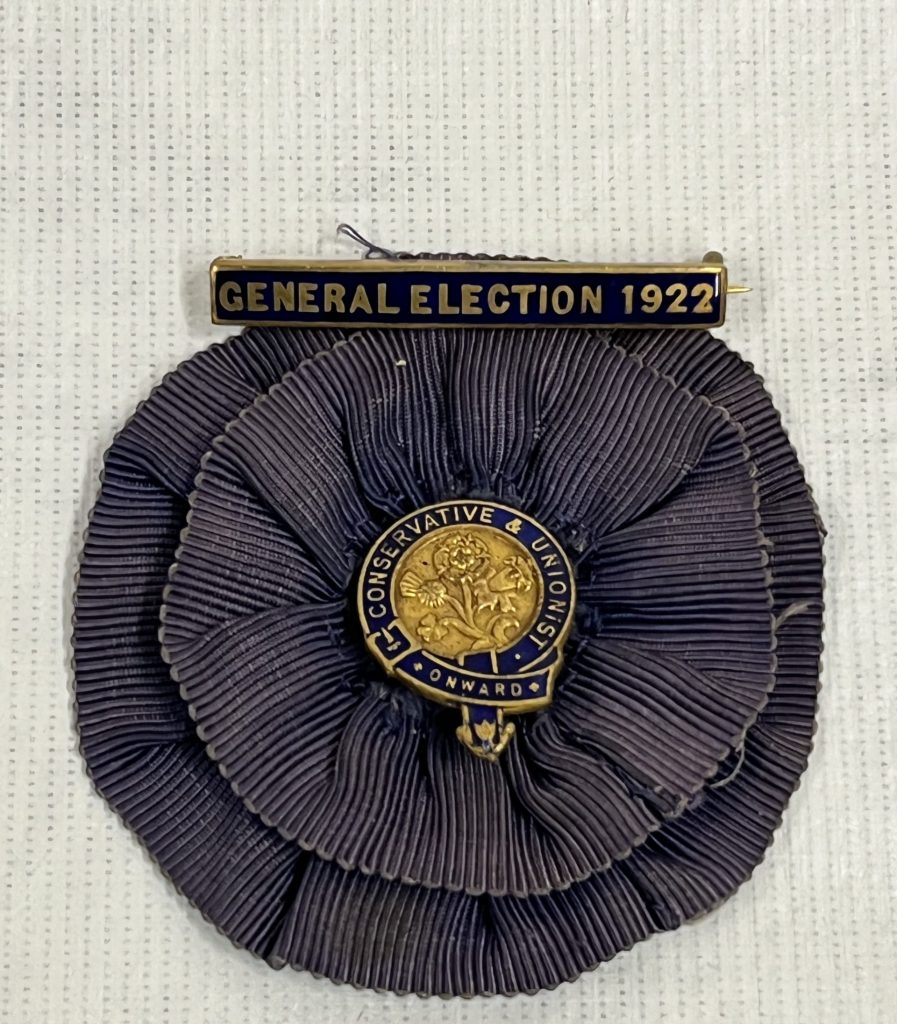
Conservative Party rosette from the 1922 general election.
The Conservative Party, led by Andrew Bonar Law, won the 1922 general election with 344 seats. It marked the beginning of the period which saw the Labour Party replace the Liberal Party as the main party of opposition.
Did you know? The number of seats in parliament was reduced from 707 to 615 in the 1922 general election due to the signing of the Anglo-Irish Treaty in 1921. The treaty provided for the creation of an independent Irish Free State on 6 December 1922, which would no longer elect MPs to the UK parliament.
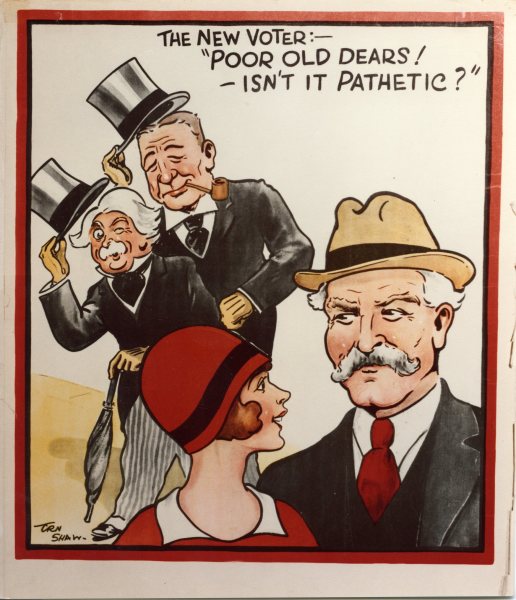
Labour Party poster from the 1929 general election focussing on newly enfranchised women voters.
The general election of 1929 saw the Labour Party, led by James Ramsay MacDonald, win the largest number of seats in parliament for the first time, although not an outright majority.
Did you know? The 1929 general election was the first in which all women and men above the age of 21 could vote. Prior to this election only women over the age of 30 who met a property qualification or who were university graduates could vote.
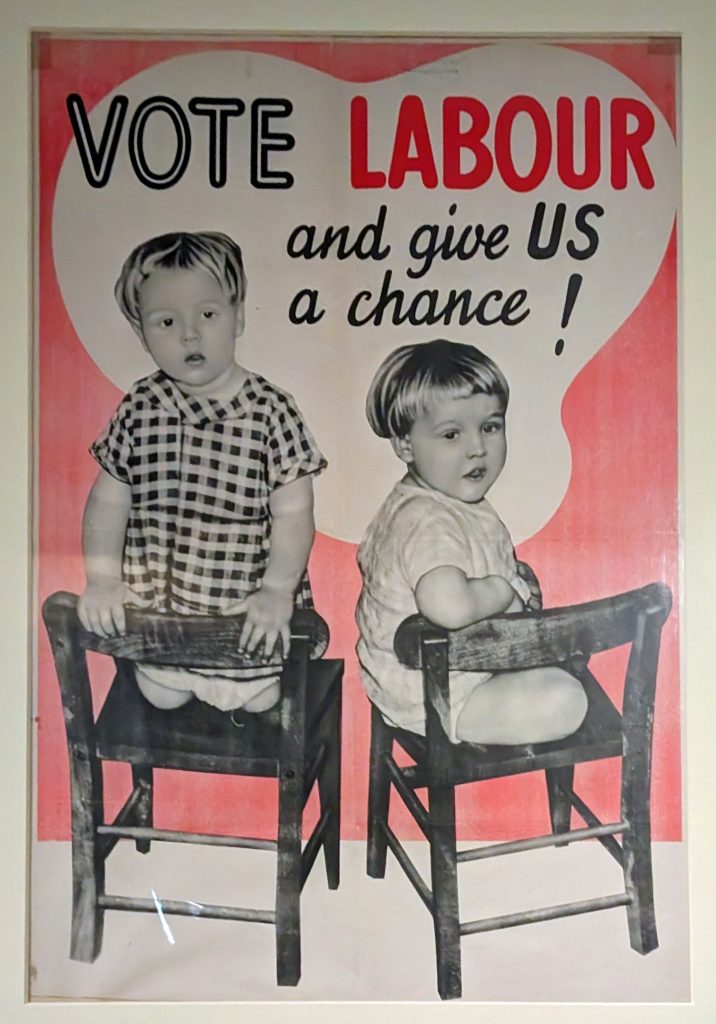
Labour Party election poster from 1935.
The 1935 general election saw another victory for the national government (now more commonly called coalition governments), led by Stanley Baldwin, but with a greatly reduced majority of 242 seats.
Did you know? Due to the Second World War (1939-1945) the parliament elected in 1935 sat for ten years as there were no general elections during wartime.
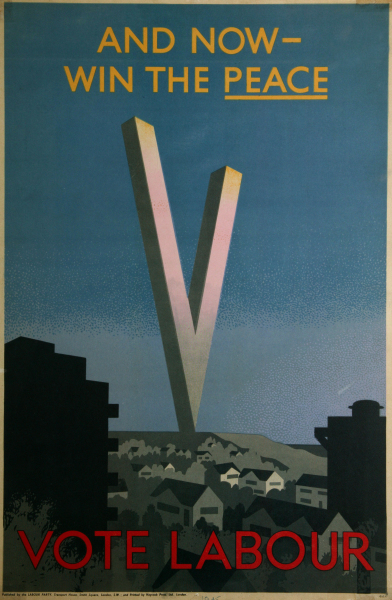
Poster from the Labour Party’s 1945 election campaign.
Britain’s wartime leader Winston Churchill was expected by many to win the 1945 general election but the Labour Party, led by Clement Attlee, secured a landslide victory. Labour’s pledges, including the establishment of a National Health Service and full employment, led to it winning a majority of 147 seats in parliament.
Did you know? Although the general election was held on 5 July 1945, the result was not announced until 26 July 1945 to allow votes from troops still stationed overseas to be counted.
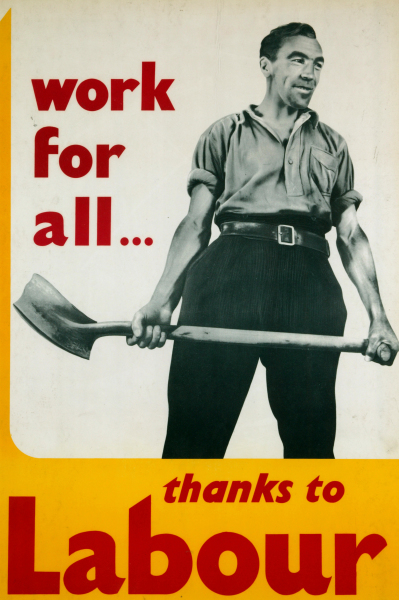
Labour Party poster from the 1950 general election celebrating ‘work for all’.
The 1950 general election saw 84% of eligible voters cast a vote, the largest turnout in British history. Since 2001 turnout at general elections has not risen above 70%.
Did you know? The 1950 election was the first election where people were barred from voting more than once. Prior to this some people, for example students at certain universities, were entitled to vote in multiple constituencies.
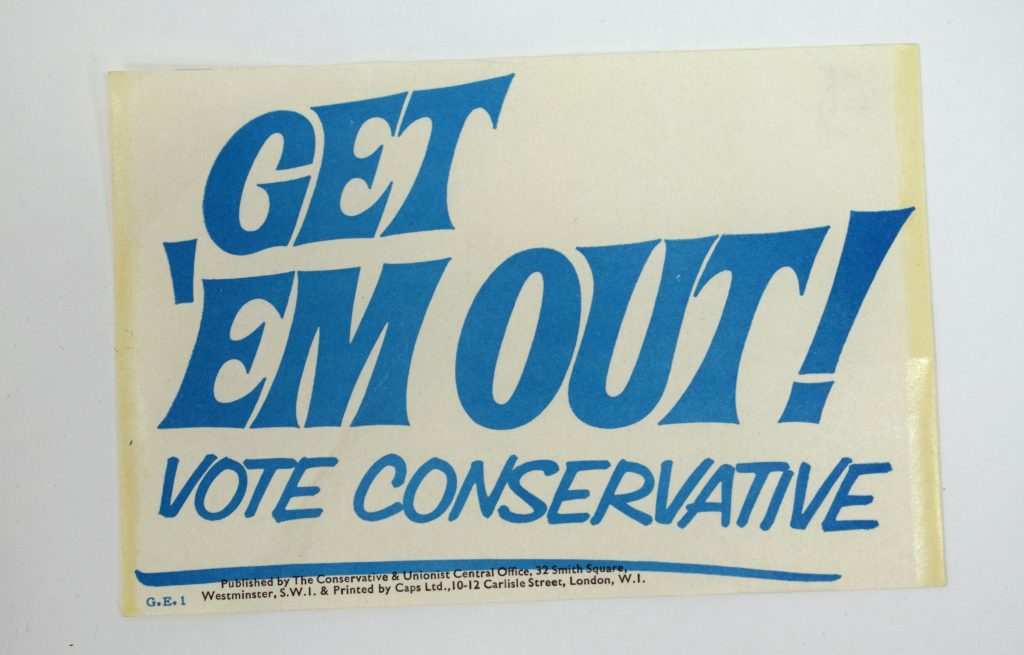
Leaflet encouraging voters to support the Conservative Party in the 1966 general election.
The Labour Party, led by Harold Wilson, won the 1966 general election with a majority of 97 seats. The new parliament made a number of significant changes to life in Britain including the abolition of the death penalty, the legalisation of abortion in most of the UK, and the partial decriminalisation of male homosexuality. A new Race Relations Act outlawed discrimination when renting housing and in hiring and promoting employees. Wilson’s government also reduced the voting age to 18 (from 21).
Did you know? When Harold Wilson became Prime Minister he was the youngest PM, at 48, to hold office since 1847. At the time of writing (2024) Rishi Sunak holds the record as the youngest PM of the modern era. He was 42 when he took office in 2022.
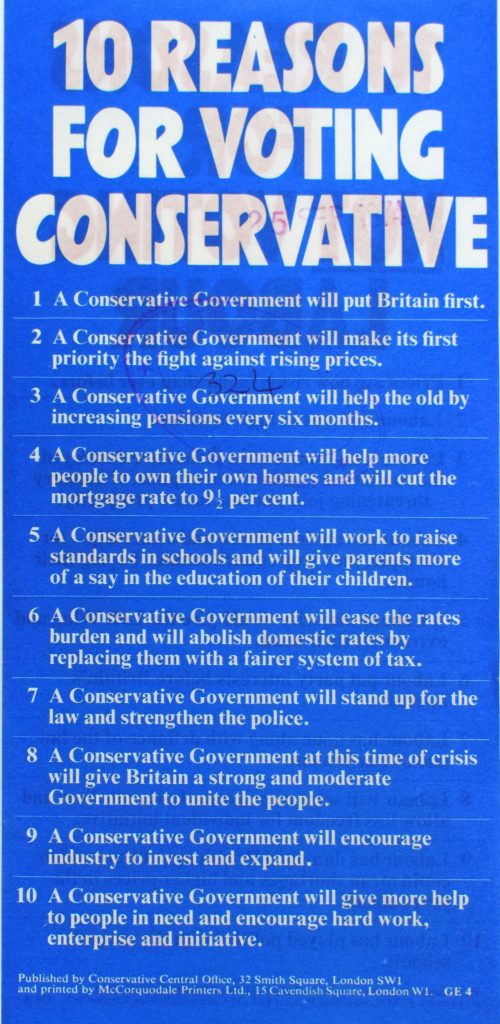
Leaflet from 1974 about 10 reasons for voting Conservative.
1974 saw two general elections, one in February and one in October. Why? The February election resulted in a hung parliament. The Labour Party led by Harold Wilson won the most seats but not a majority of seats in parliament. In an attempt to gain a majority, Wilson called another election in October which led to a Labour majority of just three seats.
Did you know? Maureen Colquhoun (1928-2021), elected as Labour MP for Northampton North in 1974, was Britain’s first openly gay MP.
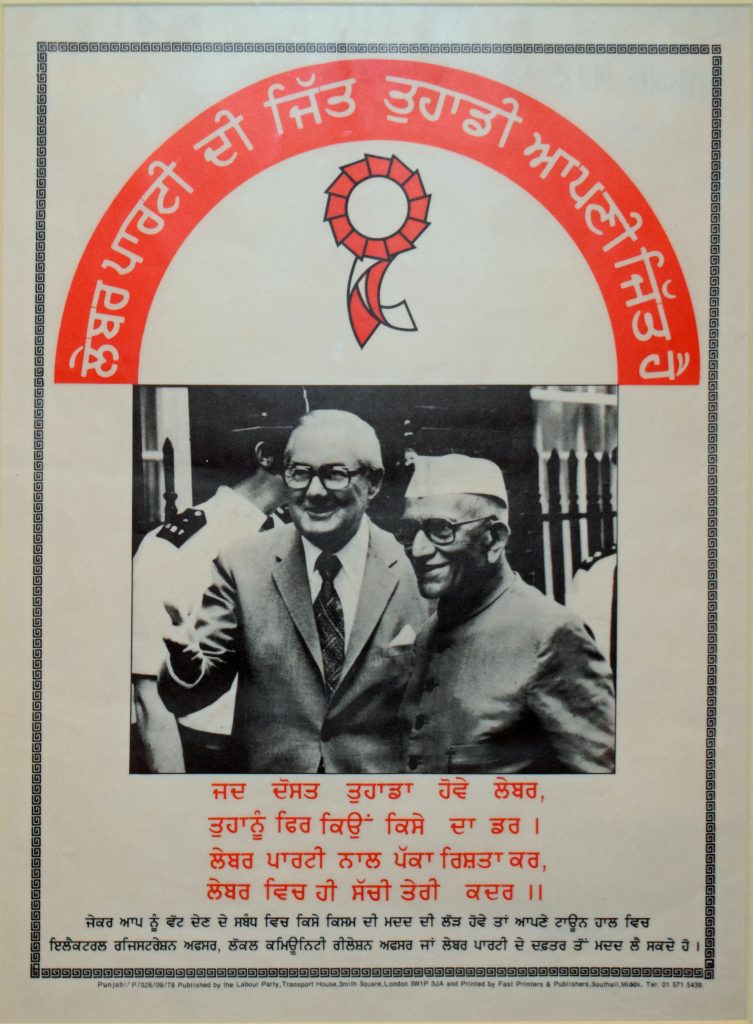
Labour Party election poster written in Punjabi from 1979.
The 1979 general election was won by the Conservative Party, and its leader Margaret Thatcher became Britain’s first female prime minister.
Did you know? Margaret Thatcher served as Prime Minister from 1979 until 1990, becoming the longest serving Prime Minister of the 20th century.
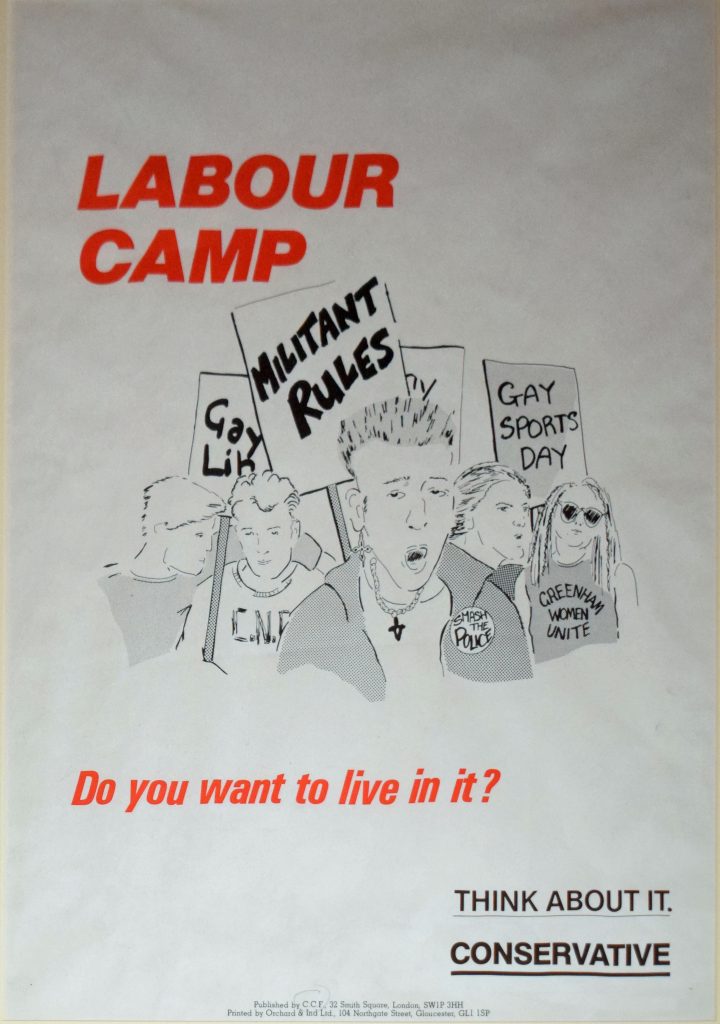
Conservative Party poster ‘Labour Camp, Do you want to live in it?’ from 1987.
The Conservative Party won the 1987 general election with a majority of 102 seats. The party’s leader, Margaret Thatcher, became the first Prime Minister in over 150 years to win a third consecutive term in office.
Did you know? 1987 saw the election of the first black MPs to parliament: Diane Abbott, Paul Boateng, and Bernie Grant.
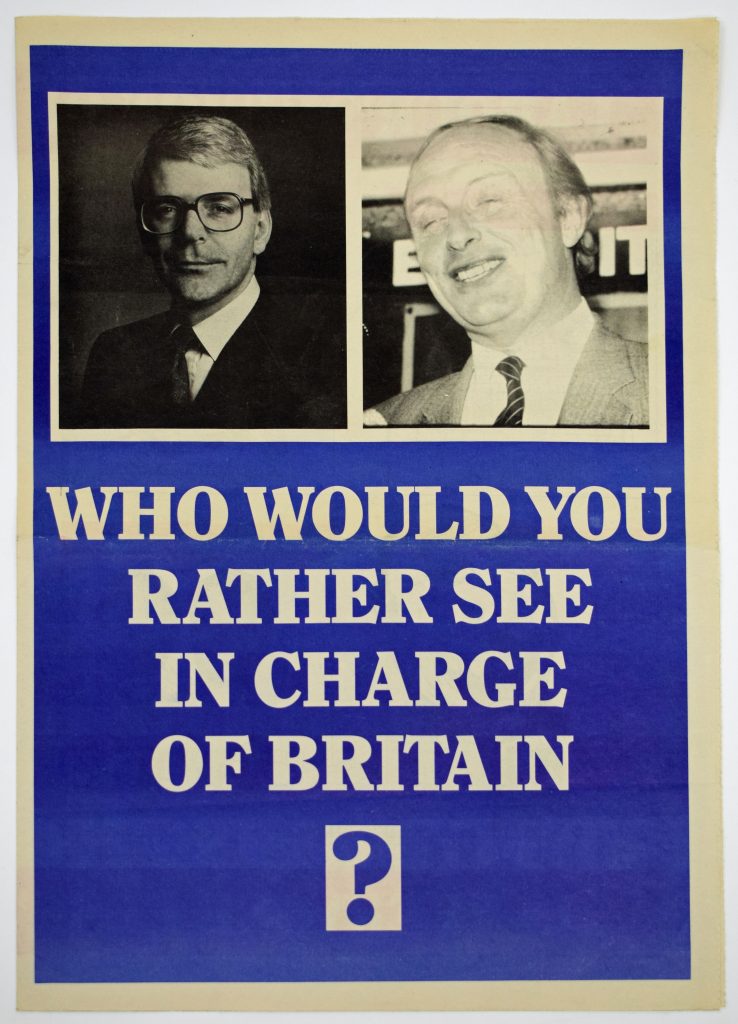
Conservative Party publication from 1992.
The Conservative Party, led by John Major, won a fourth successive general election in 1992 gaining 336 seats in parliament.
Did you know? By the time John Major called a general election in 1997 his 21 seat majority had been reduced to zero due to by-election losses and MPs defecting to other parties.
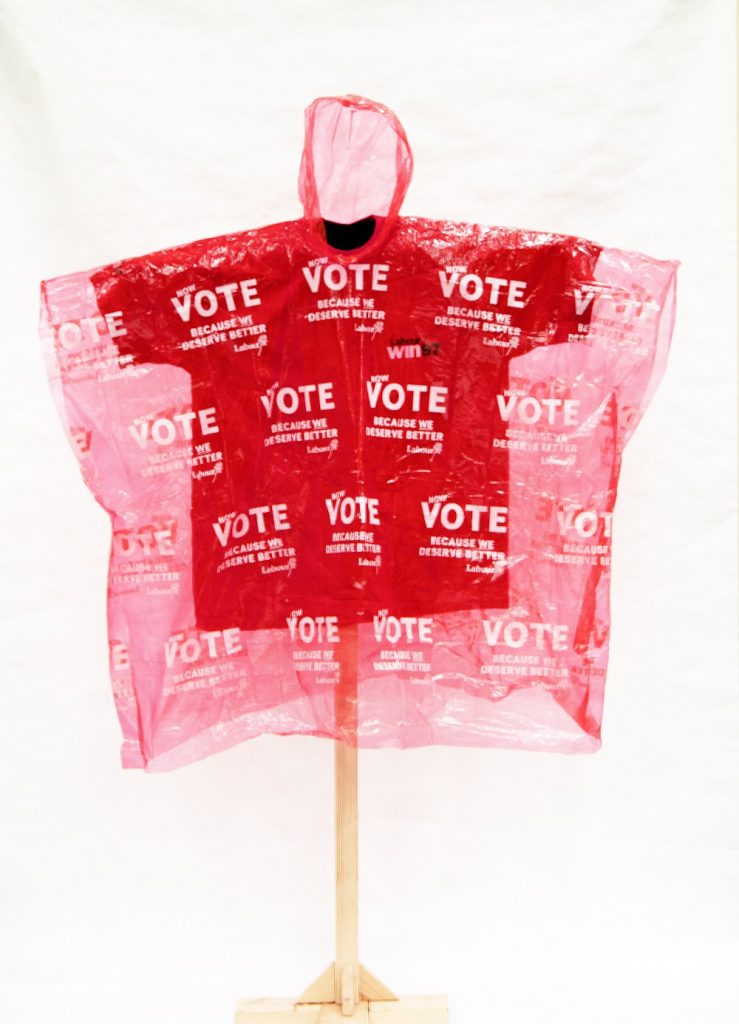
New Labour t-shirt and rain poncho from 1997.
The 1997 general election saw the Labour Party achieve a landslide victory, winning a 178 seat majority in parliament. This was the largest majority since 1935.
Did you know? David Blunkett MP was appointed Secretary of State for Education in 1997, becoming the first blind cabinet minister.
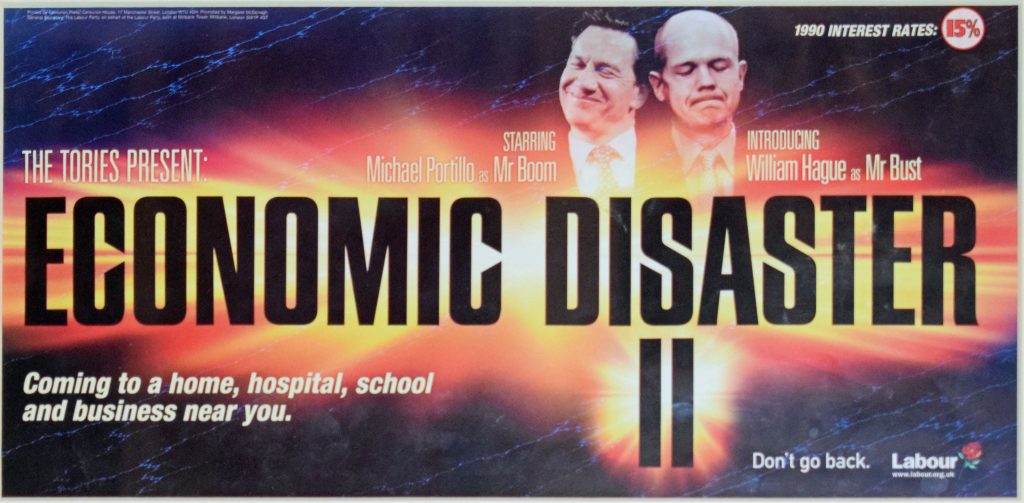
Conservation general election poster from 2001.
Labour prime minister Tony Blair returned to power following the 2001 general election with another huge majority. Labour won 412 seats compared with the Conservatives’ 166.
Did you know? Voter turnout in the 2001 general election was the lowest since 1918 with less than 60% of eligible voters actually casting a vote.
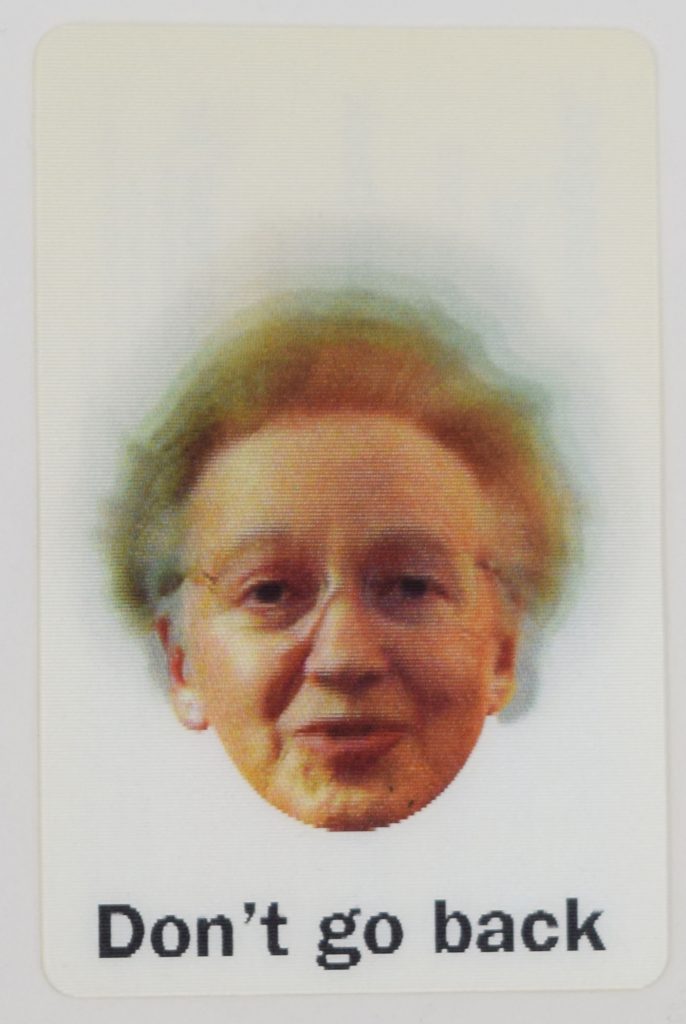
2005 Labour Party campaign card.
The 2005 general election resulted in the Labour Party, led by Tony Blair, winning a historic third term. The first and only time Labour has won three consecutive elections.
Did you know? The Liberal Democrats won the largest number of seats (62) by a Liberal party since 1923.
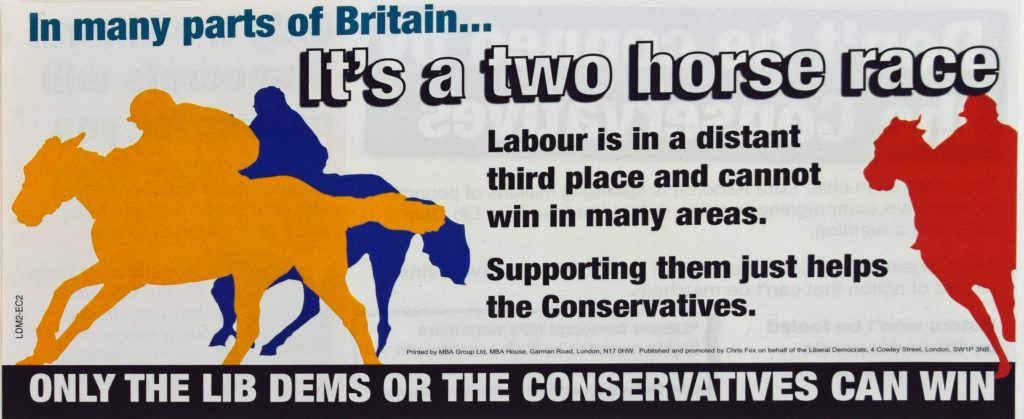
2010 Liberal Democrat leaflet, ‘It’s a two horse race’.
The 2010 general election returned a hung parliament where no party held a majority of seats. The Conservative Party, led by David Cameron, won the most seats (306) and went on to form a coalition government with the Liberal Democrats led by Nick Clegg.
Did you know? In 2010 Rushanara Ali, Shabana Mahmood, and Yasmin Qureshi became the UK’s first female Muslim MPs.
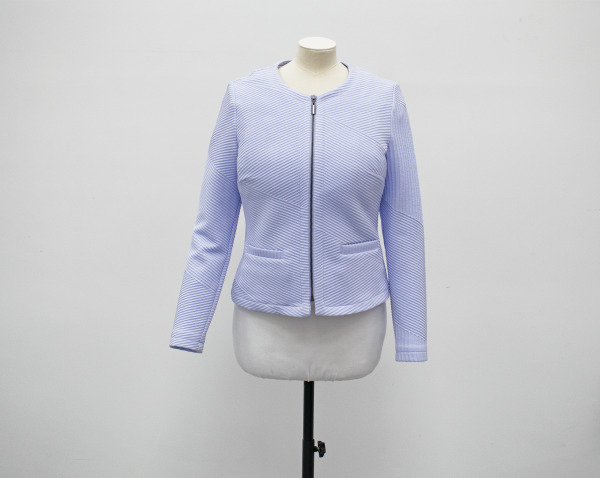
Angela Rayner’s jacket.
David Cameron led the Conservative Party to victory in the 2015 general election, securing a small majority of 11 seats. Angela Rayner, deputy leader of the Labour Party, was elected as MP for Ashton-under-Lyne in 2015.
Did you know? The constituency of Houghton and Sunderland South was the first to declare its result, just 48 minutes after voting ended at 10.00pm. St Ives was the latest to declare, a day later at 3.26pm.
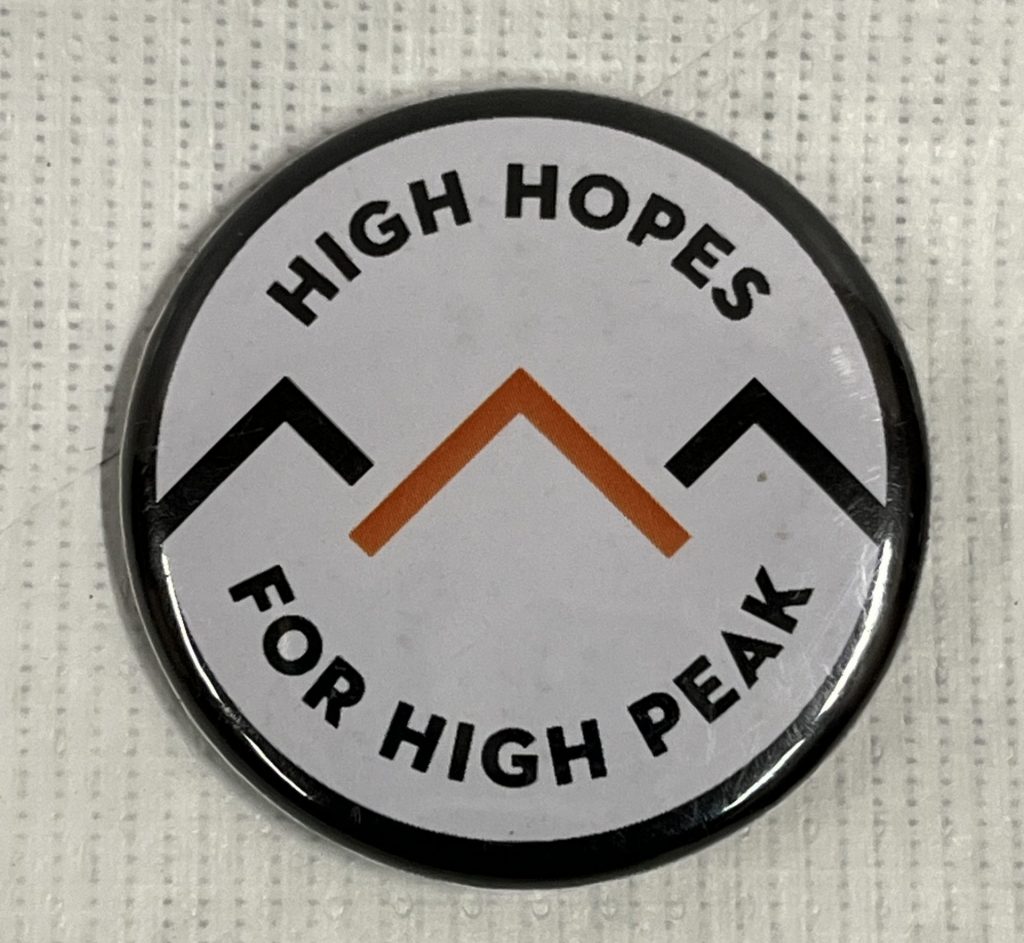
2017 High Hopes For High Peak campaign badge.
The Conservative Party led by Theresa May was widely predicted to win the 2017 general election by a landslide but in fact failed to win a majority of seats in parliament. May continued as Prime Minister, leading a minority administration which governed with the support of the Democratic Unionist Party.
Did you know? 3,303 candidates contested 650 seats in parliament in the 2017 election.
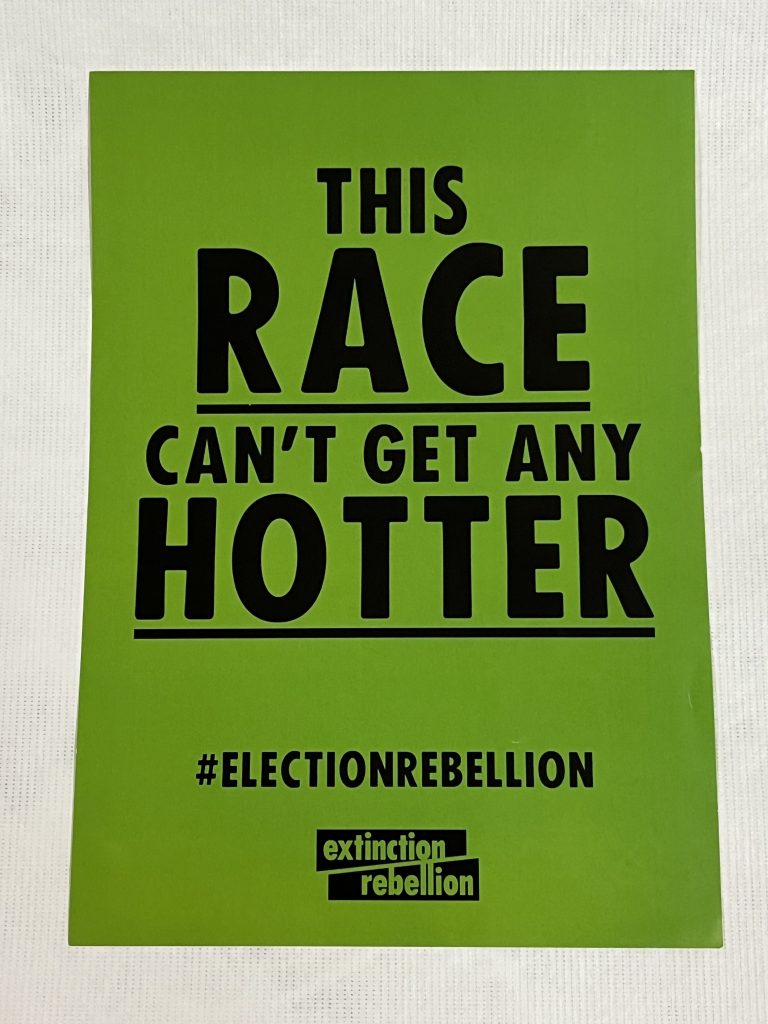
Extinction Rebellion leaflet from 2019 general election.
The 2019 general election was dominated by the ramifications of the vote to leave the European Union. The Conservative Party led by Boris Johnson won with a majority of 80 seats.
Did you know? Boris Johnson was the 14th Prime Minister since 1945, and the 11th to be a graduate of the University of Oxford. Liz Truss and Rishi Sunak were also educated at Oxford bringing the number up to 13 out of 16 post war leaders.
Collections Manager Lisa Peatfield looks after PHM’s collection, including items on display in the galleries. Lisa has developed a general election trail which is available to follow at the museum until 30 September.
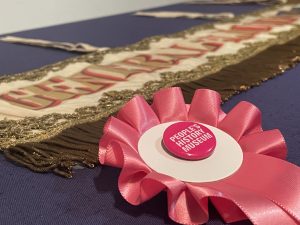
Visit the museum and open the ballot boxes around the galleries to discover how voting reforms shaped who can vote and how we vote. Starting with the Reform Act of 1867 to the introduction of voter ID in 2022. Suitable for age 12 to adults.
Book an appointment to see the archive collection with the Archive Team via archive@phm.org.uk. The collection at PHM is full of examples of election pamphlets, leaflets, posters and cards from 1900 onwards. Some are intricate pieces of design work, others are very rudimentary and purposeful.
An earlier version of this blog was first published in June 2024.